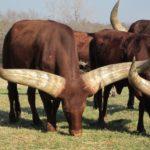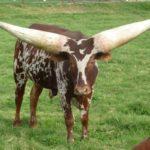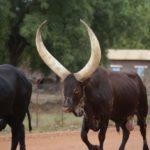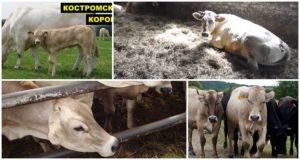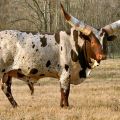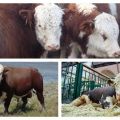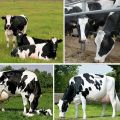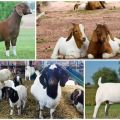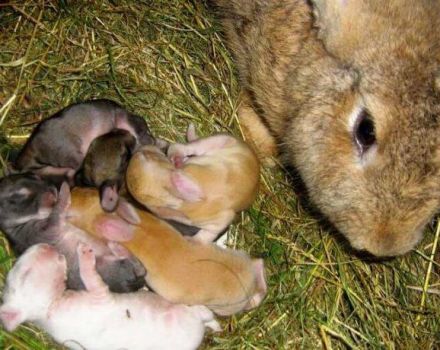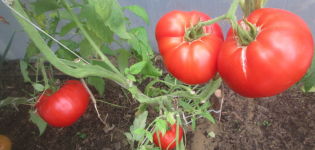The appearance and characteristics of wild bulls and cows of the Watussi breed, breeding
In the world of cattle, there are bright and distinctive representatives. One of them is the ankole watussi bull. Animals of this breed have lived next to humans for a very long time. Nowadays, the dignity of these cattle representatives for modern livestock breeders is not only their appearance, but also meat and milk productivity. Today, the history of the cattle breed Watussi has six thousand years.
History of the origin of watussi
The main ancient ancestor of the watussi bulls is considered to be the wild tur, who lived on the banks of the Nile River. Scientists suggest that there was an accidental crossing of tours with humpback zebu bulls, which came to the African continent from Pakistan, India, and local domestic cows.
The countries of East Africa are considered the birthplace of the breed:
- Uganda;
- Tanzania;
- Congo;
- Burundi;
- Rwanda.
The animals got their name from the names of local peoples, such as Tutsi and Nkole. African tribes rarely slaughtered adults of the breed for meat. Most often they were used for milk production and bloodletting. The blood of animals was also eaten.
At the beginning of the twentieth century, unusual animals were brought to European zoos. In 1960, several individuals were transported to the United States, where pedigree breeding of the breed began.
Appearance and characteristics
A bull and a cow of the Watussi breed have differences in body weight. Males weigh, in general, one and a half times more than females. The largest males can weigh more than 700 kg, while the mass of females rarely exceeds 500 kg.
The constitution of animals is strong, rather dry than loose, legs are long. A hump can be seen in the neck area, like a zebu. The body length reaches 2.6 m, the height at the withers is 1.7 m. The heads of males and females are decorated with long horns. In the latter, they are somewhat longer. In Africa, individuals with both lyre-like and pyramidal horns are found. In the US, animals with straight horns growing in different directions are more popular. The thickness of the horns at the base is 10, 40 and even 90 cm, the length of the horn can vary from 150 cm to 240 cm, and the weight reaches 50 kg. The udder of cows is small with hair. Due to the umbilical fold, the female from afar can be confused with the male.
Among African livestock breeders, animals of a dark red color are valued. Although the color can be brown, black and mottled.
Pros and cons of the breed
Like any breed, Watussi has its positive and negative sides.
Maintenance, care and nutrition
Animals of the Watussi breed do not require complex care and high maintenance costs. In Africa, sheds are built for them, where animals wait out the bad weather; in the place of constant overnight stay for the herd, they make wooden flooring.
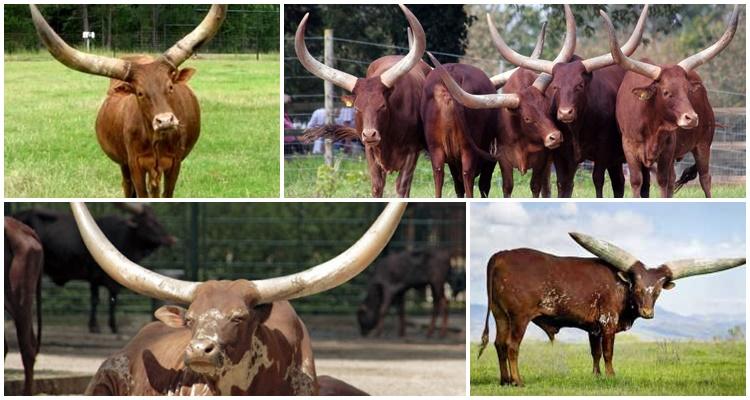
The stomachs of African cows are adapted to the digestion of rough, dry food. They do not have tympania and excessive gas formation in the scar section. When fed with straw and hay, animals gain weight well. A bull needs up to 100 kg of feed per day, a cow - up to 70 kg. With traditional keeping on fat pastures, milk yield can be increased to 600 liters per season.
Breeding the breed
The period of puberty in watussi begins at 9 months, but it is advisable to let them breed after 2 years. Typically, bulls and cows live together. Males are ready to mate at any time, and females come hunting once a couple of months.
With herd keeping for breeding, it is enough to have breeding bulls, no more than 2% of the total number.
The period of bearing offspring is, on average, 10 months. Females give birth to 1-2 calves. The weight of a newborn is 14-20 kg. The height at the withers varies from 0.6 to 0.8 meters. As a rule, calves are immediately weaned from their mothers. Sometimes babies are allowed to take two or three sips of milk before milking. Cows of this breed have a well-developed maternal instinct, and they are ready to protect the offspring from any enemies.
Frequent illnesses
Purebred vatussi bulls are distinguished by good health. They do not need special vitamin supplements to their food. Animals are resistant to all hemosporidiosis. Young animals are the most vulnerable. He usually suffers from a lack of breast milk. In such conditions, there is a large percentage of calves leaving hunger and exhaustion.
